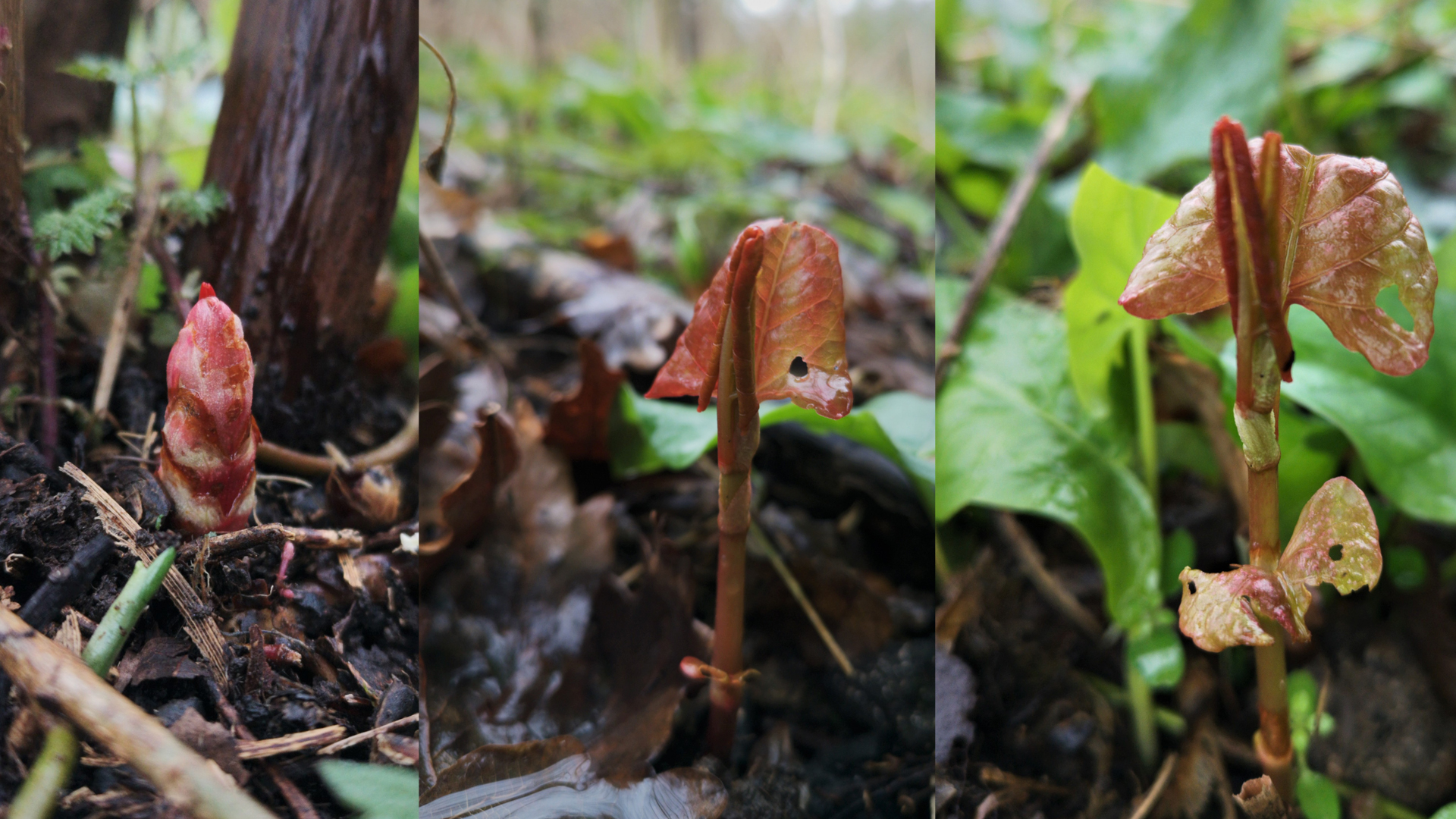Japanese knotweed looks very different through the seasons. In this article we’ll show you what to look for when spotting the very first signs of knotweed, even when it’s been damaged by frost!
WHAT DOES EARLY KNOTWEED LOOK LIKE?
Knotweed can sometimes bud (as red buds on the crown) throughout the winter but will do nothing until early spring (March-April) when those buds start to grow. Some think the red crown buds is an early sign of growth, but they won’t erupt as new stems until early spring.
In very sheltered warm microclimates (like under an air conditioning vent, or an alcove which is unusually sheltered and sunny) knotweed can ‘sometimes’ start growing out of season – but it’s very rare. Knotweed shoots only really start to become reliably visible from early spring.
So what does knotweed look like when it first emerges? Knotweed lies dormant over the winter months, with new growth shooting from its underground powerhouse – the rhizome root network. It’s these rhizomes that store the nutrients in readiness for spring when the plant reactivates.
As the picture below shows they don’t always have the typical ‘asparagus’ resemblance, and can simply look like a small red leaf on a pale green stem. But as these shoots get taller they become more visible and defined.
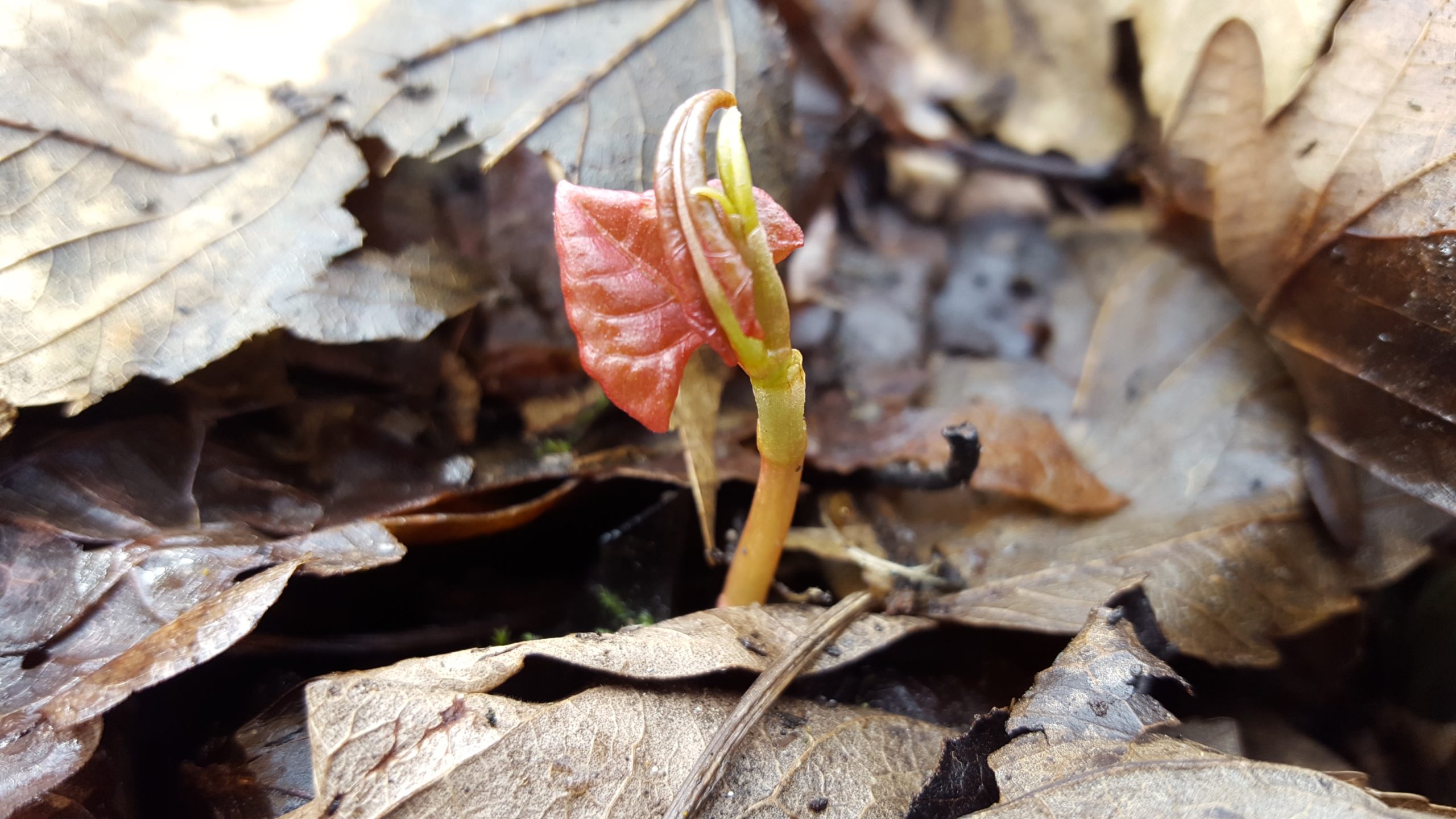
As we can see from the image below the leaves start out as tightly curled structures that start at the tip of the stem. When they begin to unfurl they point away from the stem. As more leaves grow, each one springs from a single node along the stem. Eventually the leaf formation creates the zig-zag pattern that knotweed is famous for.
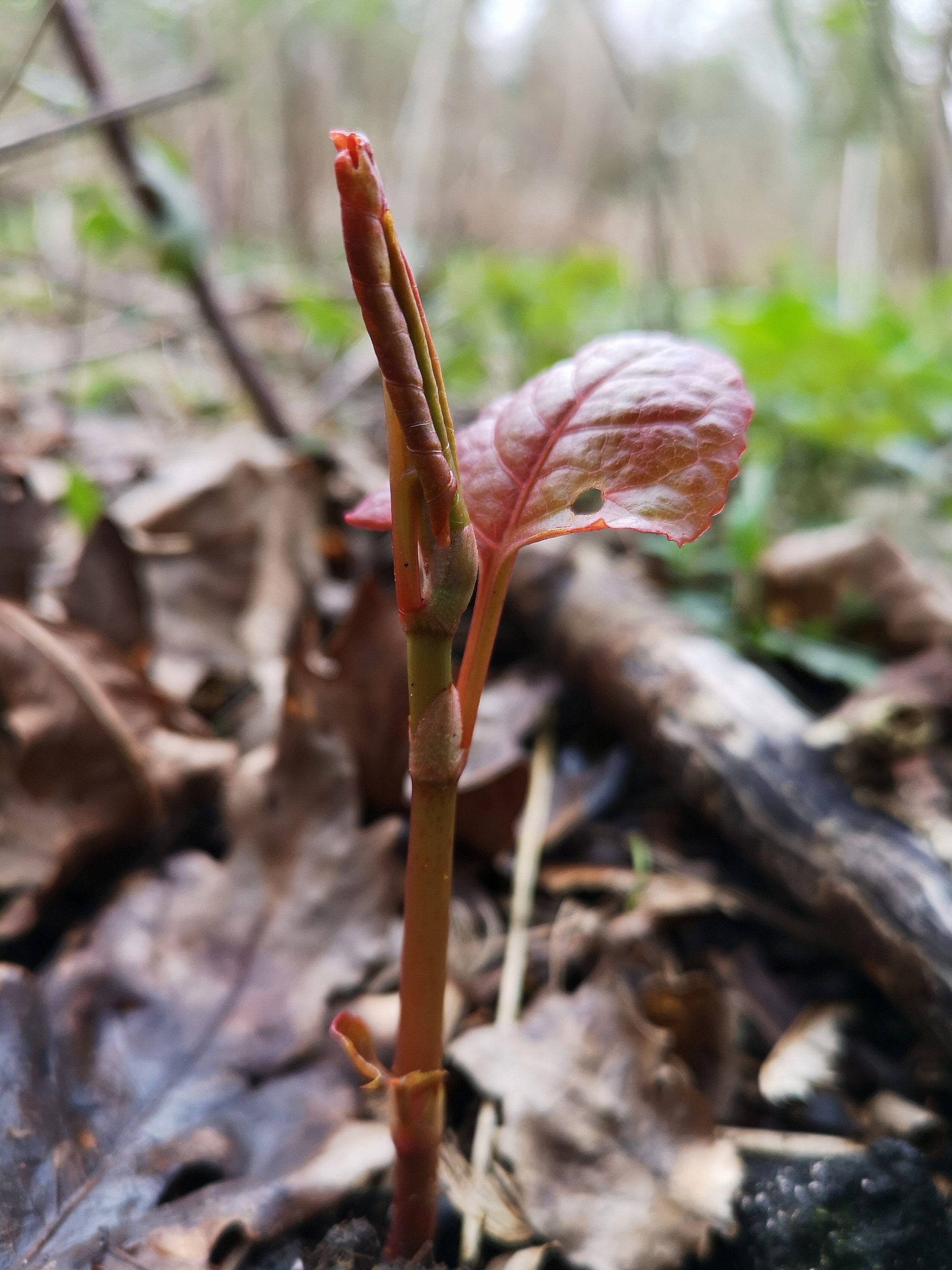
Below we see a more typical knotweed shoot – they look like an asparagus tip but reddish-purple in colour (or often a more vibrant pink). It’s the curled-up leaves that create the ‘asparagus’ appearance. Unlike the real asparagus the tips do not stay that shape as the leaves unfold.
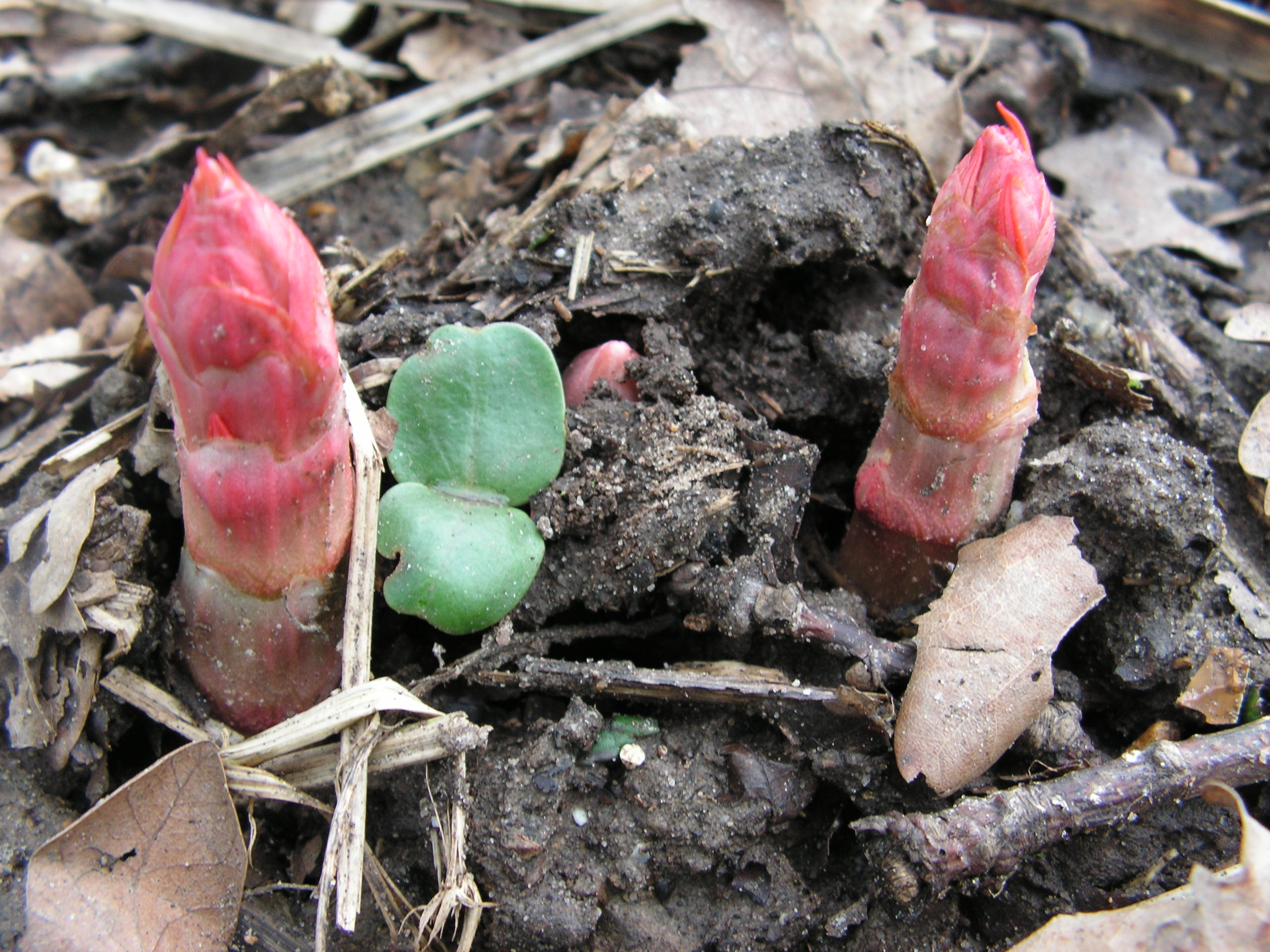
Here (below) we can see knotweed shoots growing from last year’s crown. The visible dead canes from the previous growing season are brittle and hollow but as the rhizome crown remains viable even over winter it is capable of new growth come the spring.

Even when knotweed has been previously treated it can still grow back – this is why herbicide is a method of control and we typically carry out a treatment programme of 5 or even 10 years. The image below shows early knotweed from previously treated growth. The shoots are visibly smaller, but the characteristic red stems and pale green leaves give it away!
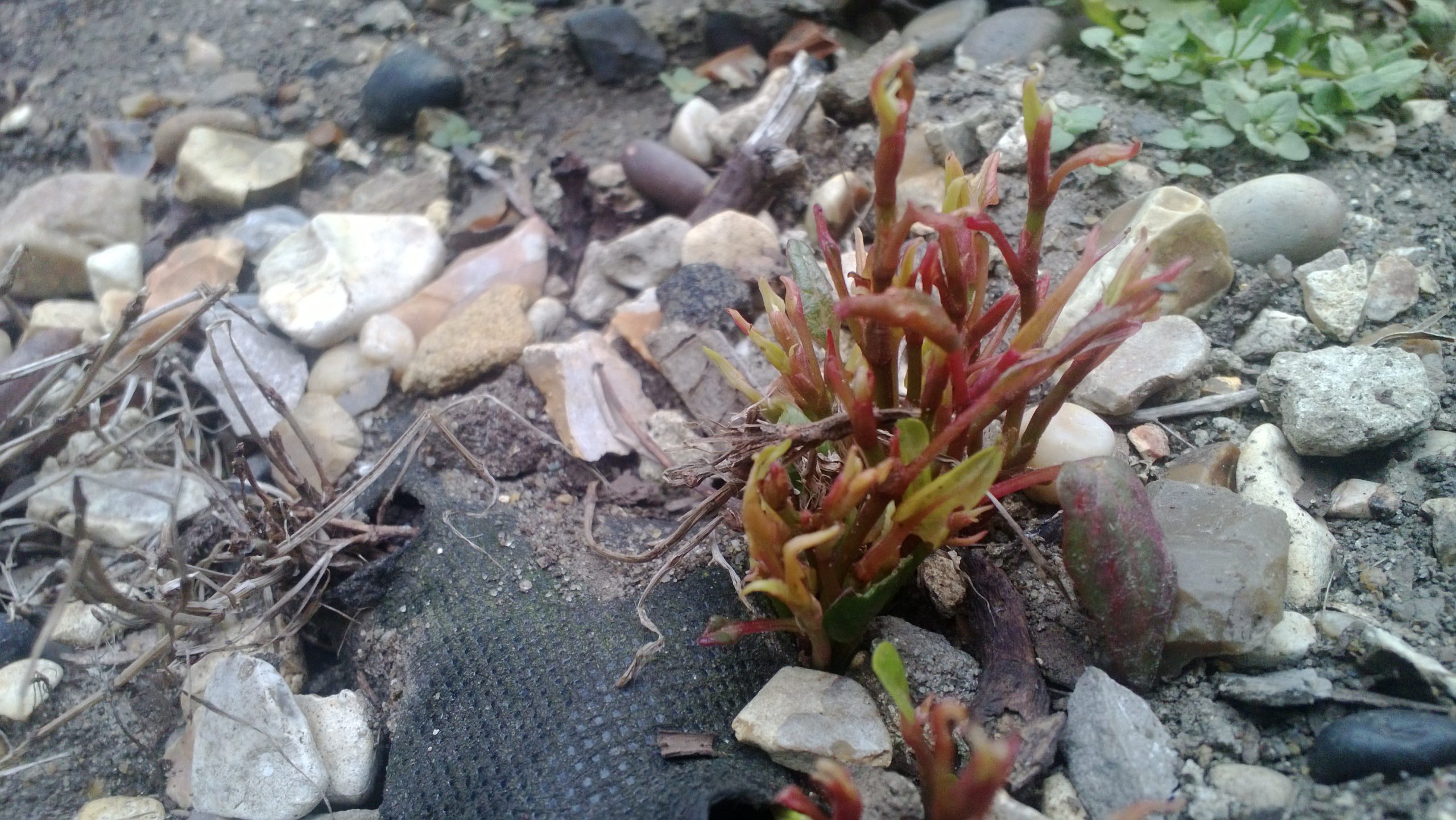
Knotweed can be hidden beneath the undergrowth or in grass a the start of the growing season so they can be very difficult to spot. But look for the distinctive red stems and pink/auburn/green leaves. The leaves when unfurled are shovel-shaped.
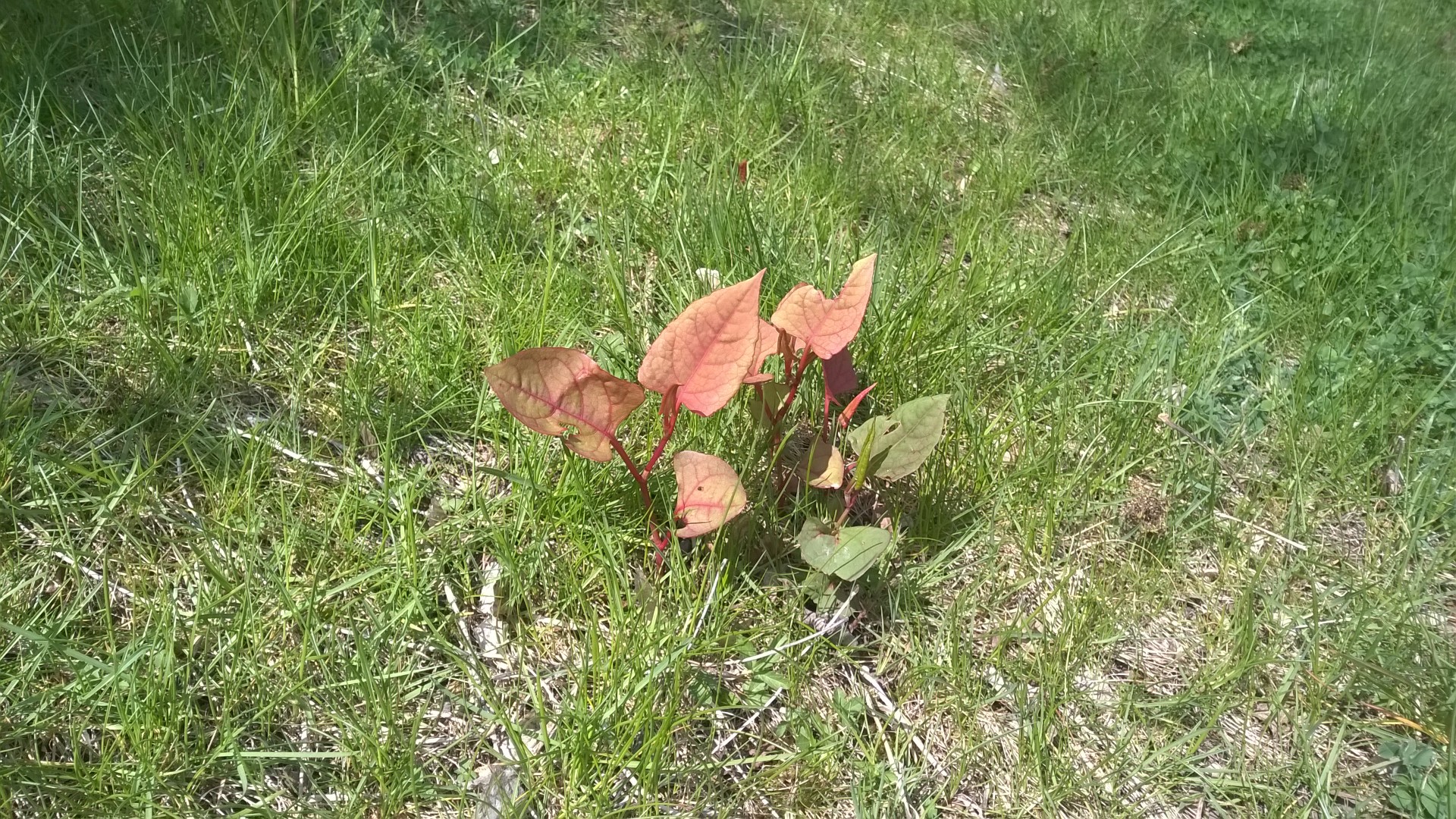
The image below shows more early knotweed shoots emerging from soil. You can see why it’s difficult to spot when it’s surrounded by winter foliage that’s still on the ground. Here the leaves have turned pale green but look closely and you’ll see the nodes on the stem are the knotweed red.
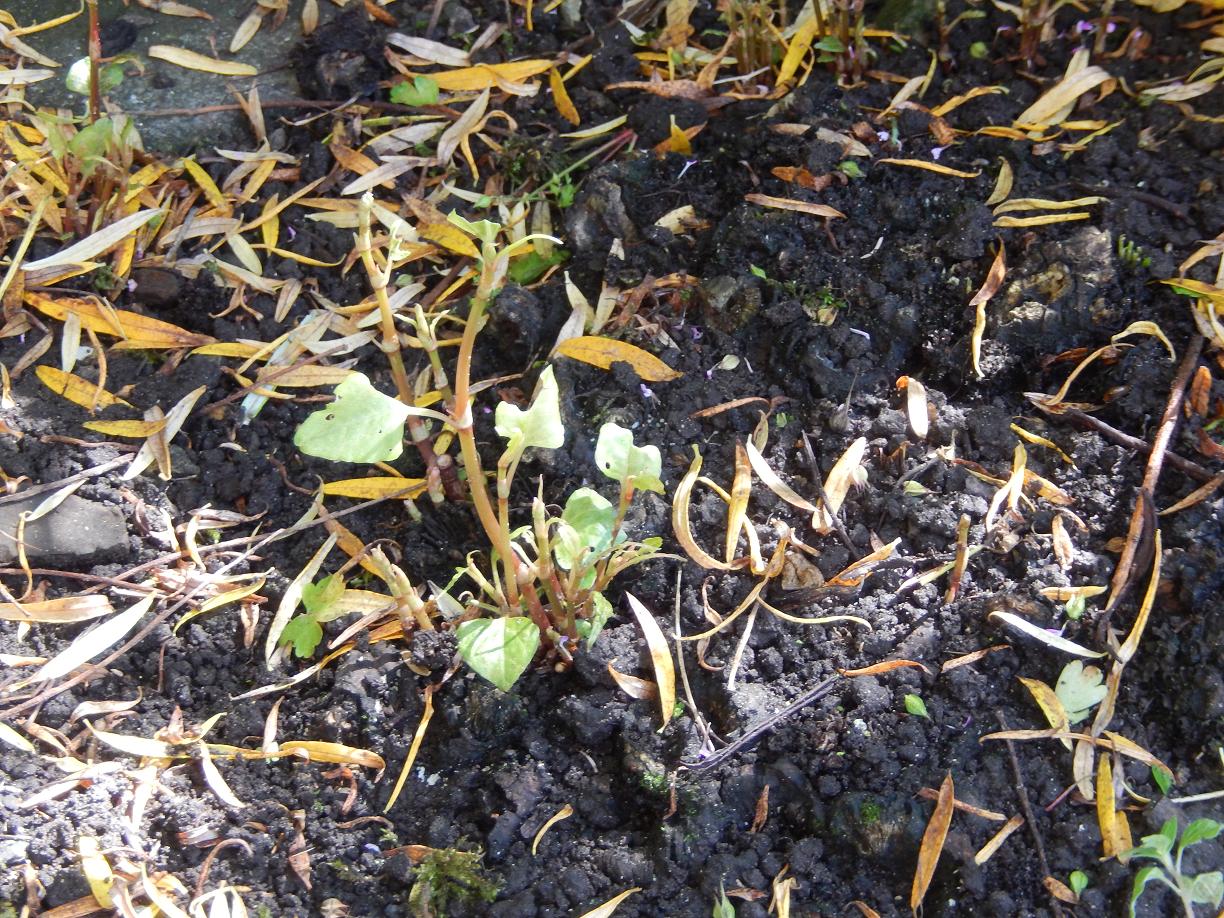
Knotweed loves to grow near water, so don’t overlook waterways as the shoots can emerge either next to a river bank, or even emerge from the water itself – as seen below. Also visible in this picture are last season’s dead canes.
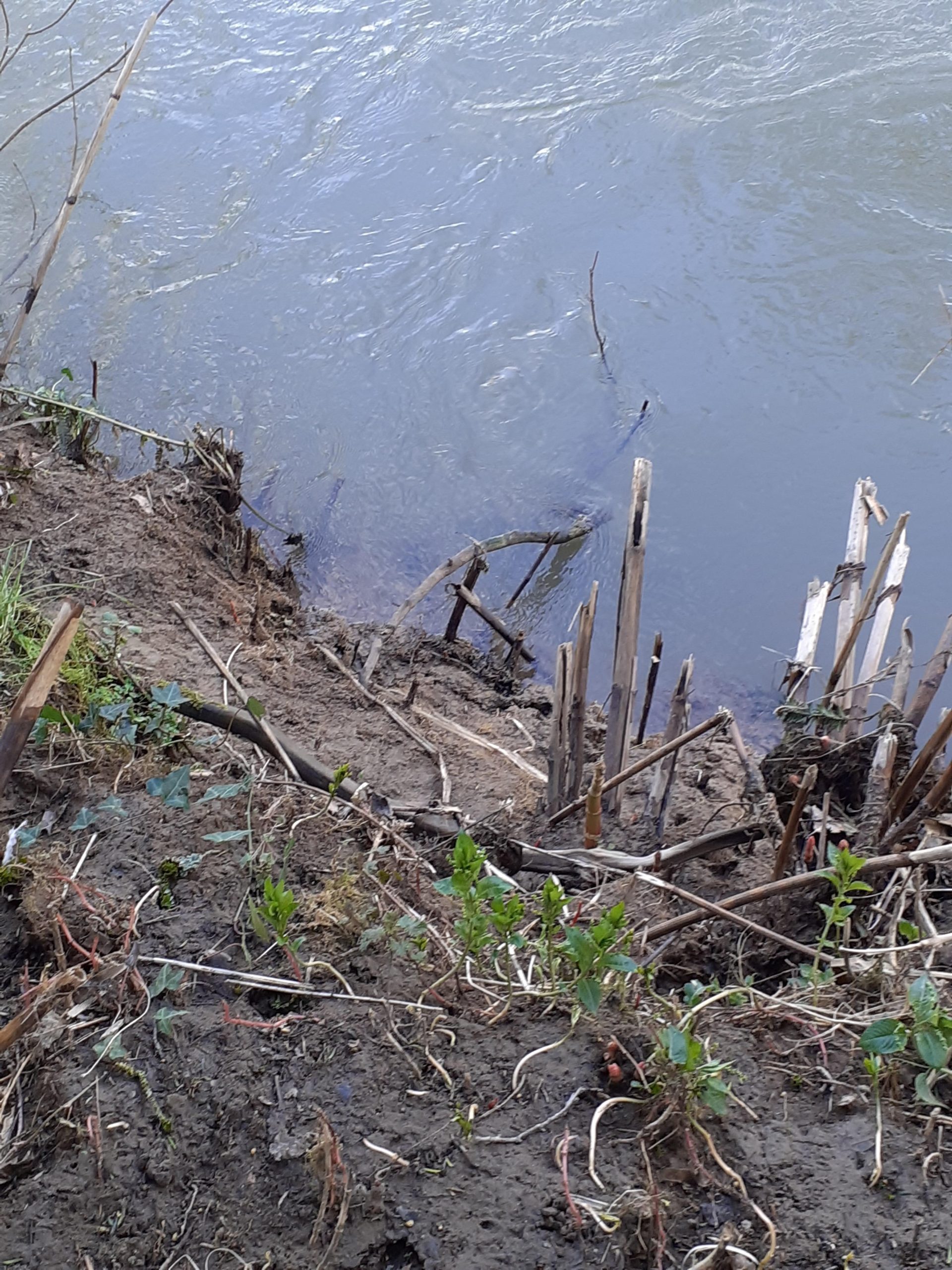
Of course it’s not unusual to see seasonal frosts as the knotweed is springing to life, and this can cause damage as shown below. If the shoots have grown they will wither and turn brown.
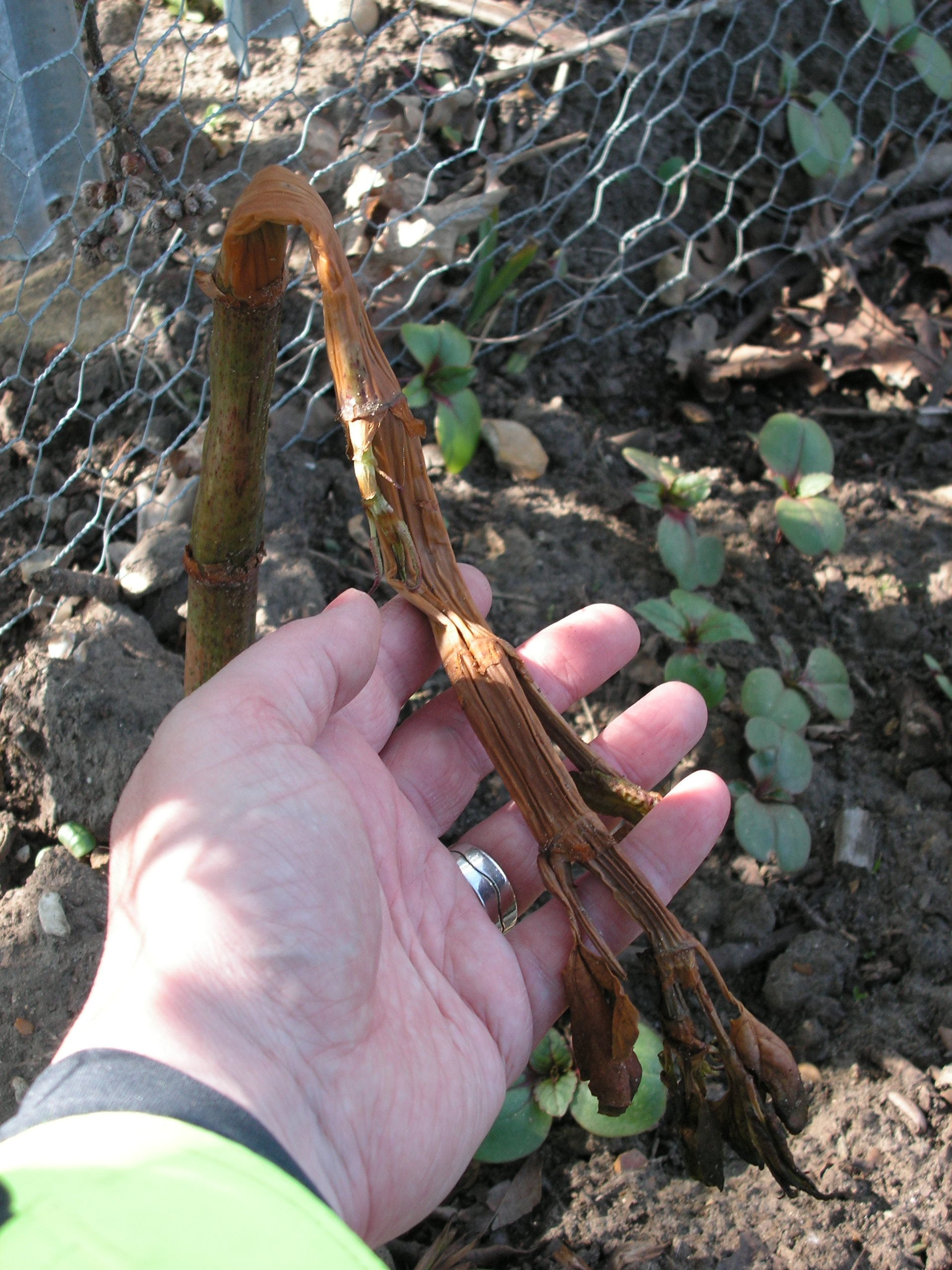
But as the image below shows knotweed is a very resilient plant, and can recover from frost damage quickly. This resilience is what makes the species so dominant – it can thrive in the harshest of climates.
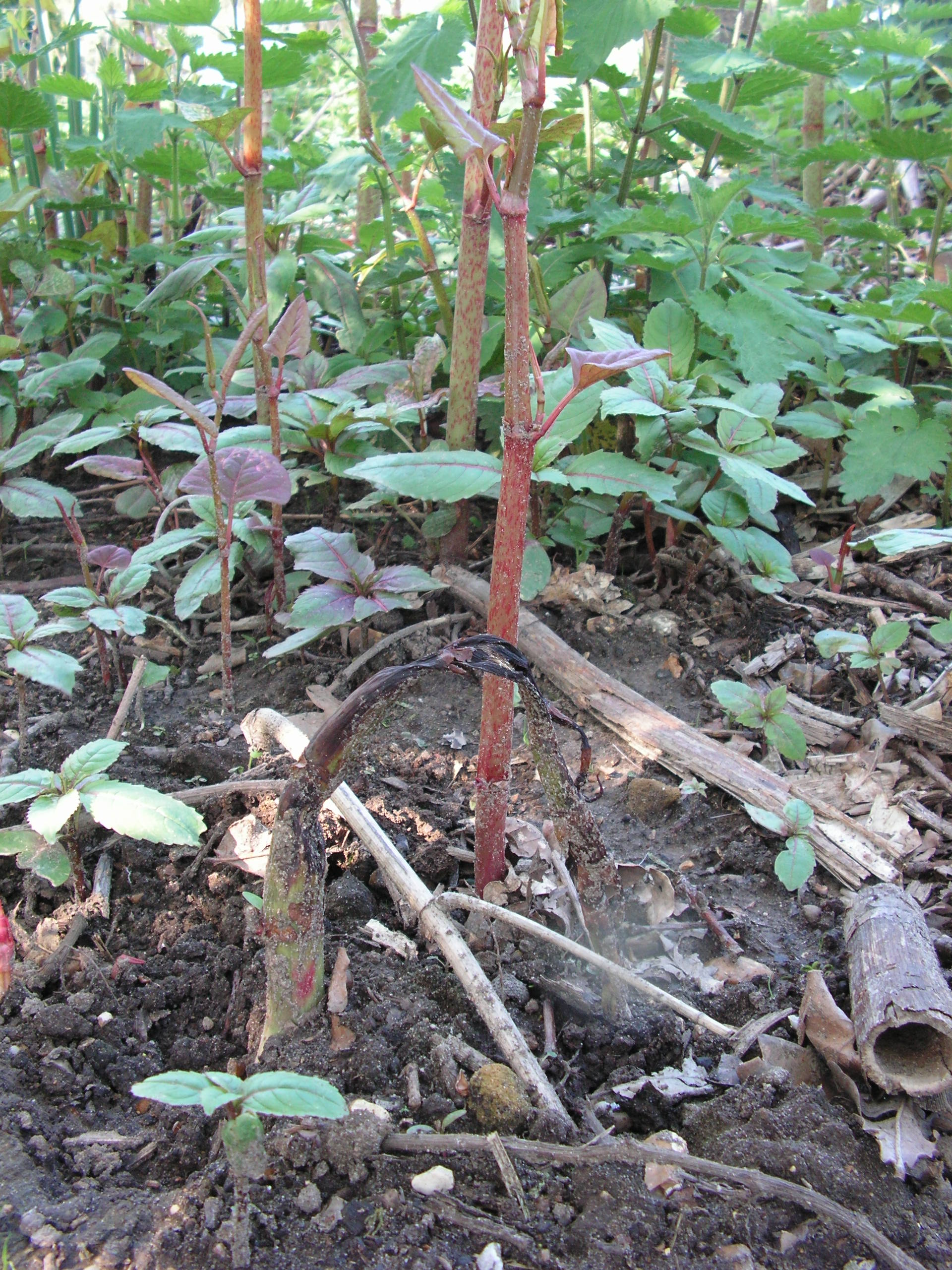
Knotweed in residential gardens can often go unnoticed, as they emerge looking much like a lot of other shrubs at this time of year. It’s important to keep a watchful eye for the red stems and leaf shape because this could have encroached from a neighbour’s garden and so was not visible last season.
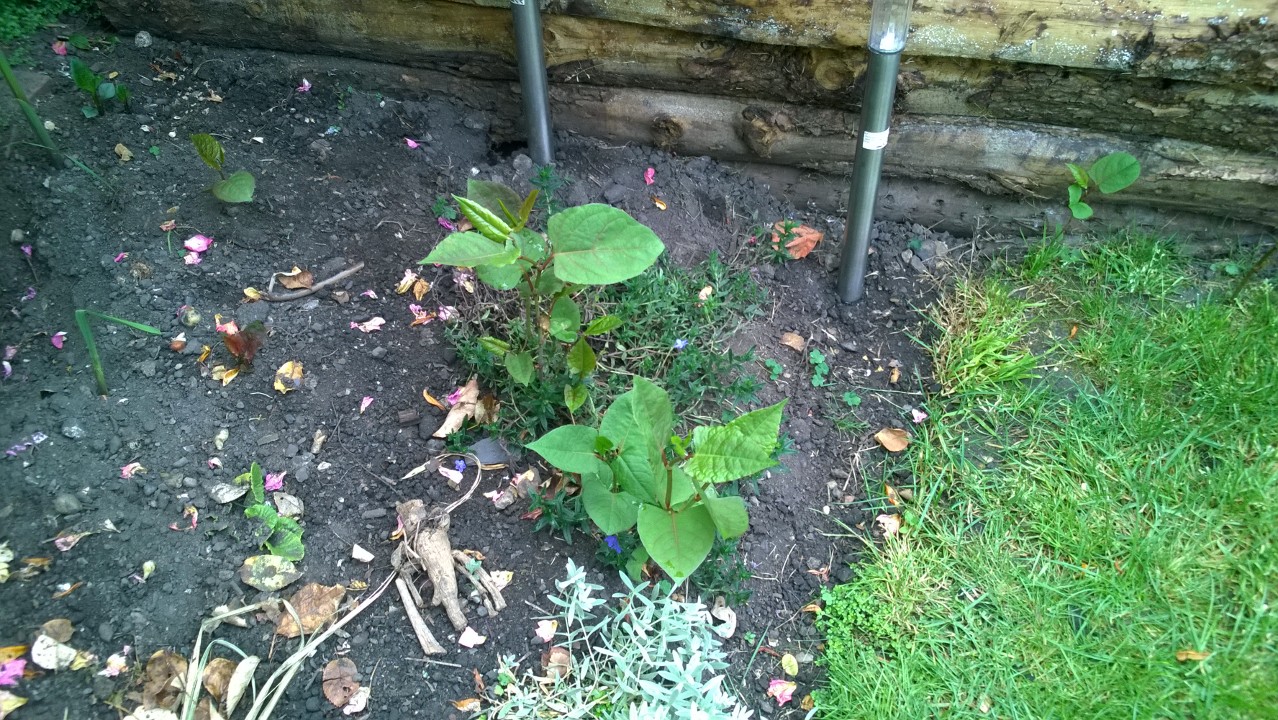
EARLY IDENTIFICATION IS IMPORTANT
Whether you’re a homeowner, landowner or commercial entity, for peace of mind we advise getting a knotweed survey carried out as early as possible. Our trained surveyors can spot knotweed at any stage of its lifecycle, and catching it early on could reduce treatment or removal costs.
REMEMBER:
- Knotweed will put development and construction projects on hold.
- Knotweed on residential property may affect buying and selling.
- Knotweed will spread which may lead to legal implications.
- Getting rid of knotweed requires a qualified contractor.


